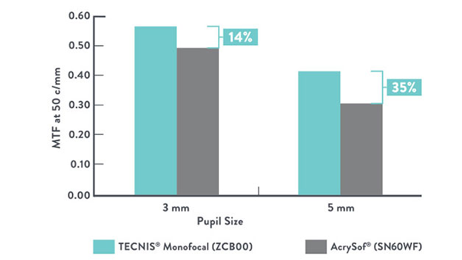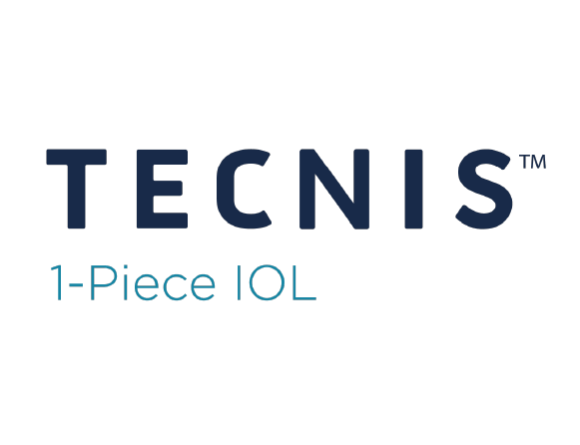TECNIS™ 1-Piece IOL
TECNIS™ 1-Piece IOL
To order this product, please contact your sales rep.
Instructional Guides
Instructional Guides
Instructional Guides
Proven, Everyday Excellence
The IOL you choose is the vision your patients take with them. Give them the excellent outcomes they deserve with the sharp vision, enhanced functionality and long-term sustainability from the TECNISTM 1-Piece IOL.
The TECNISTM 1-Piece IOL is engineered for a high standard of optical excellence1,2,3 so you can leave each patient with the sharp, high-quality vision they deserve.
What does proven optical excellence mean for your patient outcomes?
- 70% of patients had best corrected binocular distance visual acuities (BCDVA) 20/16 or better1
- 96% of patients had BCDVA of 20/20 or better1
- Spherical aberration corrected to essentially zero for outstanding visual performance2
- Reduced chromatic aberration for excellent image contrast3
TECNISTM IOLs provide 14–35% improved image contrast from chromatic aberration reduction* and correction of spherical aberration to essentially zero.2,3
Best-Focus MTF3 White Light MTF (c/mm)

Up to 35% improved image contrast with a large pupil (5 mm).
Modular Transfer Function (MTF) is a measure of the amount of contrast transferred by the optics in a visual system. The higher the MTF value, the more contrast transferred to the image, resulting in higher image contrast. AcrySof is a trademark of Novartis AG Corp.
Optimized for peak functional vision, TECNISTM IOLs deliver high-quality, real-world performance so your patients can get back to their daily activities, even in low-light conditions. In fact, they’re shown to improve patient safety under low-visibility conditions.2
JJSV lenses are likely to have meaningful safety benefits for older drivers as well as drivers and pedestrians sharing the road. TECNISTM IOLs improve functional vision, which may also increase patient safety in other low-visibility situations.2
Unlike another leading IOL, TECNISTM IOL material is not associated with
glistenings,4-8 which can inhibit your patients’ vision. Glistenings cause light
scatter, which can result in a reduction in image contrast.5-9
|
Model: |
ZCB00 |
|
|
OPTIC CHARACTERISTICS2 |
||
|
Powers: |
+5.0 D to 34.0 D in 0.5 diopter increments |
|
|
Diameter: |
6.0 mm |
|
|
Shape: |
Biconvex, anterior aspheric surface, square optic edge |
|
|
Material: |
UV-absorbing hydrophobic acrylic |
|
|
Refractive Index: |
1.47 at 35° C |
|
|
Edge Design: |
ProTEC frosted, continuous 360° posterior square edge |
|
|
BIOMETRY |
APPLANATION ULTRASOUND |
OPTICAL |
|
A-Constant: |
118.8* |
119.3** |
|
Theoretical AC Depth: |
5.4 mm |
5.7 mm |
|
Surgeon Factor:10 |
1.68 mm |
1.96 mm |
|
HAPTIC CHARACTERISTICS2 |
||
|
Overall Diameter: |
13.0 mm |
|
|
Style: |
C |
|
|
Material: |
UV-absorbing hydrophobic acrylic |
|
|
Design: |
Haptics offset from optic |
|
IOL INSERTION
Recommended insertion instruments:
The UNFOLDERTM Platinum 1 Series Implantation System: Intuitive push-and-twist, screw-style insertion designed to simplify lens implantation.
Also available preloaded in TECNIS SimplicityTM Delivery System.
FOOTNOTES
*A-Constant theoretically derived for ultrasound biometry.
**Derived from clinical evaluation results of the 1-Piece IOL Platform for optical biometry.
REFERENCES
© Johnson & Johnson and its affiliates 2024
For healthcare professionals only. Please reference the Instructions for Use for a complete list of Indications and Important Safety Information and contact our specialists in case of any question.
2024PP15294

